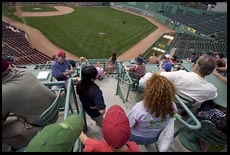
Canon EF 17-40/4L USM Lens Review
by Philip Greenspun; created June 2007
Site Home : Photography : EF 17-40/4L

by Philip Greenspun; created June 2007
Site Home : Photography : EF 17-40/4L
Canon makes two high-quality wide-angle zoom lenses for full-frame
cameras, the 17-40/4L reviewed here and the
If you have a full-frame Canon digital body, don't need the extra f-stop of viewfinder brightness or available light capability, and want to save $700, this might be your next lens.
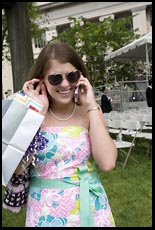
The lens design is of low complexity for a zoom, with 12 elements of glass arranged in 9 groups; Canon's f/2.8 prime wide-angle lenses typically include 10 elements of glass. Three of those elements are aspherical, which improves image quality and reduces the number of elements required. Thus, contrast can be as high and flare as well-controlled as with a simpler prime lens. Distortion will be a little higher.
Maximum magnification is 0.24x at a distance of less than one foot. With a full-frame camera, the smallest object you can photograph is roughly half the size of an 8.5x11" (A4) piece of paper.
Like all L lenses, the 17-40/4L is ruggedly constructed and resistant to water and dust. The included EW-83E lens hood bayonets onto the exterior of the lens, leaving the 77mm filter and lens cap threads free. The 17-40 incorporates a ring USM motor, which enables "full-time manual focus", even when the camera/lens are set to autofocus. This is very useful when using Custom Function 4 on an EOS body, which moves autofocus to the exposure lock button on the rear. You can focus manually if desired and, at any time, push the rear button to give yourself a shot of autofocus.
Weight is 500g, which balances well with Canon's mid-priced bodies. The medium-speed prime lenses are much lighter, however, e.g., only 185g for the 28/2.8.

The most likely alternative to this lens is the 16-35, which is somewhat heavier (640g) and twice as expensive. The highest quality alternative to any wide-angle zoom lens is a bag of prime lenses.
It isn't much lighter than the 16-35/2.8L. It isn't better quality than the 16-35/2.8L. It isn't dramatically wide on the small sensor cameras. However, if you want a high quality wide-angle zoom with a medium weight and a medium aperture, the 17-40/4L is an excellent value.
When Canon comes out with an inexpensive full-frame digital body, this lens will be part of a great traveling kit:
2018 Update: It has been 11 years since this article was written. The cheapest current Canon full-frame body is the 6D II, $1,600 at Amazon. No wonder most people just use their phones!
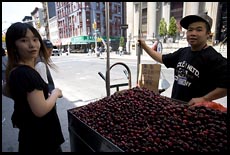 |
24mm. With street photography, you need to lift the camera, push the shutter release, and put it down with a smile before people start throwing stuff at you. Chinatown, Manhattan. ISO 200 allowed settings of f/5.6 and 1/250th. Stopping down from f/4 increased the depth of field enough to cover focus errors. The faster shutter speed freezes camera shake and/or subject movement. |
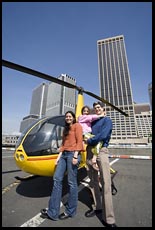 |
17mm. Everyone has long legs at 17mm. Downtown/Wall Street Heliport. Parking is about $50 per hour. |
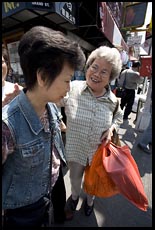
|
Image at left: 17mm. Image at right: 40mm. I wish that the final ear in the frame had a mobile phone held up to it, but that's why street photographers throw out 99 percent of their images. |
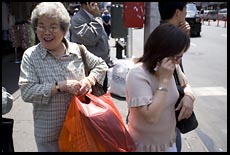
|
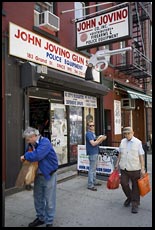 |
36mm. There is something about a gun shop in Manhattan that makes a photo interesting even at a boring point-and-shoot camera focal length. |
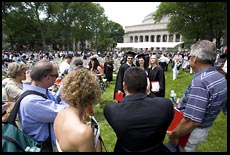 |
17mm. Even at f/9, the background is not within the depth of field, which concentrates attention on the foreground circle of photographers. |
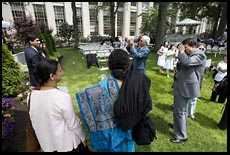 |
20mm. |
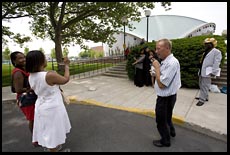 |
17mm, f/10. Everything is in focus. |
Text and pictures copyright 2007 Philip Greenspun. Unless otherwise noted, all images on this page were taken with a full-frame Canon 5D.